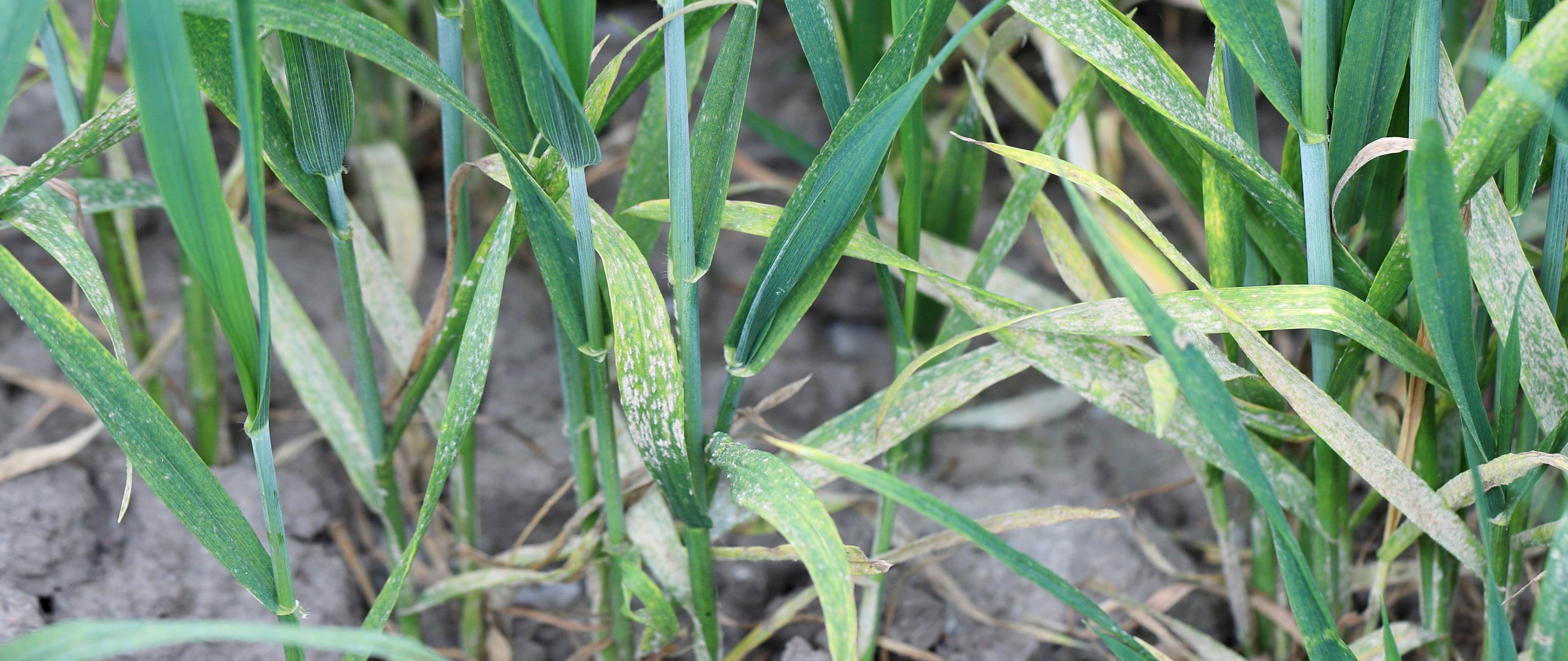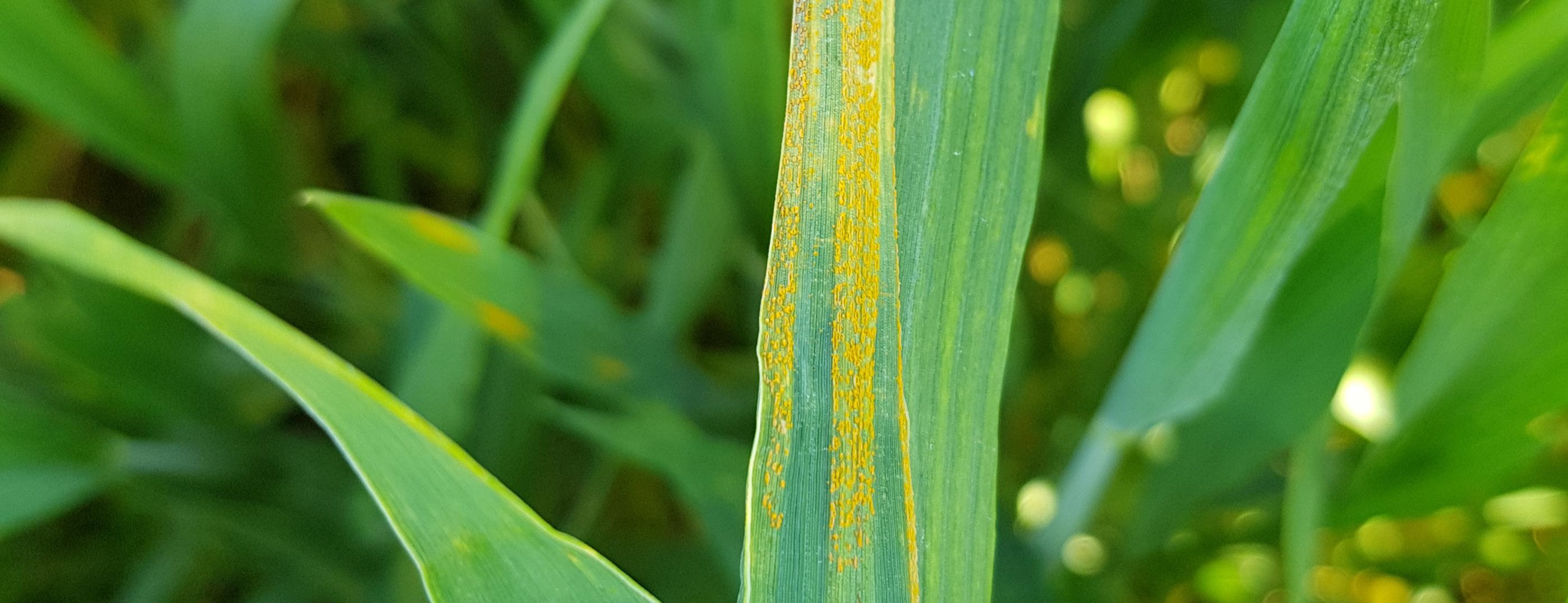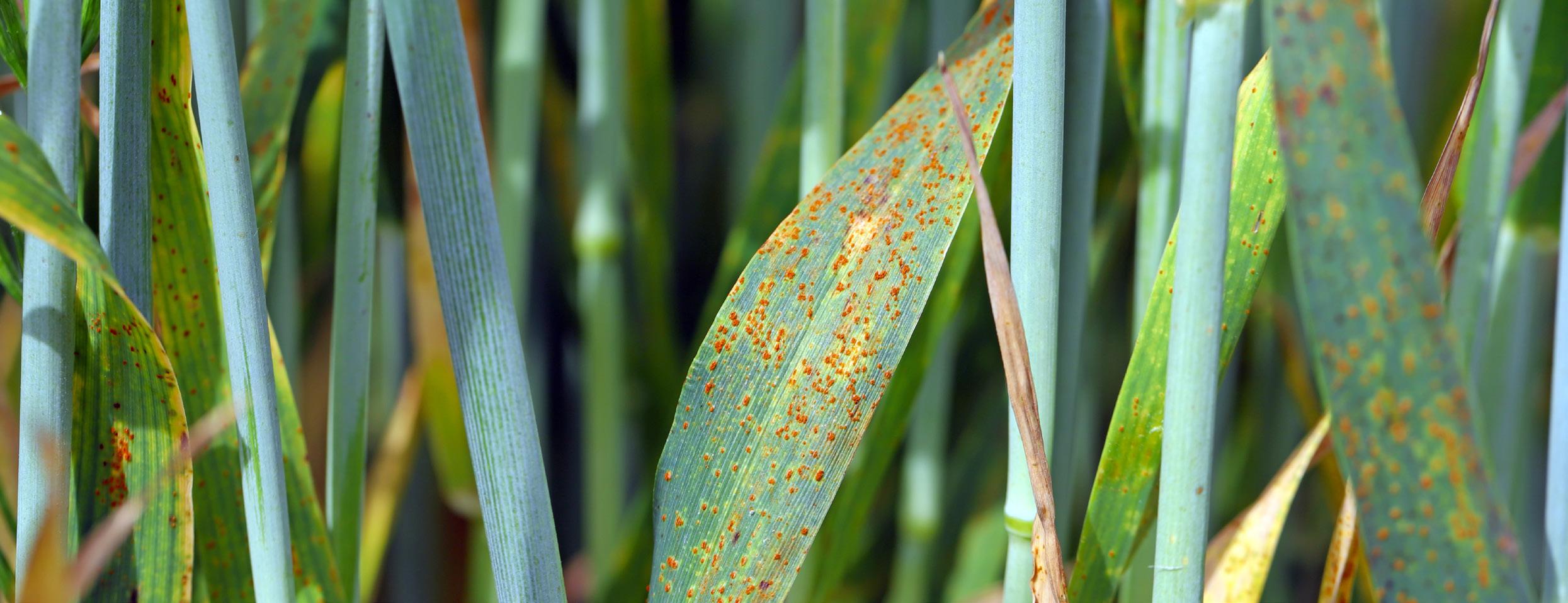Cereal Fungicides
Spring Product Range
Early disease onset in crops varies each season. If cereal crops are not protected at key timings and at early stages of disease development, crop yield potential can be severely impacted.


Early disease onset in crops varies each season. If cereal crops are not protected at key timings and at early stages of disease development, crop yield potential can be severely impacted.

Clayton Plant Protection formed in 1991, recently celebrated over 30 years in the Ag industry, and have evolved rapidly to market and distribute a wide range of crop protection products across UK and European markets.
The company is wholly family owned with an excellent reputation in the industry for trust, building established relationships and highquality products with a known provenance.
Clayton is continuously innovating to provide cost effective product options and uniquely, ensures an alternative choice for customers and growers to the larger multinational Ag businesses.


David O’Mahony Managing Director

Clayton offer a wide range of leading fungicides for cereal crops this spring. Achieving good crop growth to maximise yields relies on effective, early control of damaging fungal diseases.
Careful planning in terms of product choice for contact and protective fungicides will help growers achieve the best results at key application timings.
Our cost-effective products can help put in place the right building blocks for successful disease control.
For more information on the products in this guide please visit our website. If you require information on compatibility tank mixes, please contact us.
info@claytonpp.com www.claytonpp.com
Early disease onset in crops varies each season. If cereal crops are not protected at key timings and at early stages of disease development, crop yield potential can be severely impacted.

Many fungicide active ingredients rely on protectant activity and therefore must be applied before disease becomes established.
With an expanding range of proven, cost-effective fungicide formulations, Clayton provides valuable choice, flexibility and ideal baseline products for tackling cereal diseases this spring.
CEREAL FUNGICIDES - PRODUCT OVERVIEW
CLAYTON AUGUSTA™
SC formulation, 250g azoxystrobin
CLAYTON NAVARO™
EC formulation, 125g prothioconazole & 125g tebuconazole.
CLAYTON CANYON SC™
SC formulation, 500g folpet
CLAYTON TUSKAR™
EC formulation, 250g prothioconazole.
CLAYTON TEBUCON 250 EW ™
EW formulation, 250g tebuconazole
CLAYTON TENDRIL™
SC formulation, 160 g/L prothioconazole & 300 g/L spiroxamine
Effective, useful systemic and protectant strobilurin fungicide.
Use Rate: Apply at 1.0 l/ha for a maximum of 2 treatments per crop.
Target Diseases: Wheat: Brown rust, Ear diseases (Cladosporium, Alternaria), Glume blotch, Yellow rust. Can reduce severity of Take-all.
Barley: Brown rust, Rhynchosporium leaf blotch – reduction, Net blotch. Can reduce severity of Take-all.
• Effective against key cereal diseases including rusts, blotches, and ear diseases.
• Proven Azoxystrobin Performance – Trusted strobilurin active delivering consistent results in wheat and barley.
• Supports Root Health – can reduce severity of take-all, protecting yield and plant resilience.
• Flexible tank mix compatibility options for users

For further information on Clayton Augusta, please refer to the product label and for information on compatibility tank mixes, please contact us at info@claytonpp.com
Powerful, broad-spectrum co-form offering a great balance of high efficacy and cost-effective disease control this spring.
Active Ingredients: 125g/l prothioconazole and 125g/l tebuconazole
Use Rate: Wheat / Winter rye: Apply at 1.0 L/ha for a maximum of 2 treatments per crop before end of flowering (GS69).
Barley / Oats: Apply at 1.0 L/ha for a maximum of 2 treatments per crop up to beginning of flowering (GS61).
Target Diseases:
Wheat: Septoria, Rusts, Glume blotch, Tan spot (Control). Powdery mildew (Moderate control). Eyespot, Fusarium ear blight, Sooty moulds, Mycotoxin deoxynivalenol DON (Reduction).
Barley: Powdery mildew, Rusts, Net blotch, Rhynchosporium leaf blotch (Control). Eyespot, Fusarium ear blight, Sooty moulds (Reduction).
• A powerful systemic, protectant and curative fungicide.
• Perfect choice for disease control at early season timings
• High quality EC co-formulation containing prothioconazole
• Flexible tank mix compatibility options for users

For further information on Clayton Navaro, please refer to the product label and for information on compatibility tank mixes, please contact us at info@claytonpp.com
Powerful, high-loaded systemic, protectant and curative triazole fungicide for great value disease control and a perfect partner product this spring.
Wheat OSR Barley Durum Wheat Oats Winter Rye Triticale
Active Ingredients: 250g/l prothioconazole
Use Rate: Wheat / Durum wheat / Winter rye: Apply at 0.8 L/ha for a maximum of 3 treatments per crop before GS71.
Barley / Oats: Apply at 0.8 L/ha for a maximum of 2 treatments per crop up to and including GS61.
Target Diseases:
Wheat: Control of Powdery mildew, Yellow rust. Moderate control of Septoria, Brown rust, Fusarium ear blight, Glume blotch and Tan spot. Reduction of Eyespot and Mycotoxin deoxynivalenol (DON).
Barley: Control of Powdery mildew, Yellow rust, Brown rust, Rhynchosporium leaf blotch and Net blotch. Moderate control of Fusarium ear blight. Reduction of Eyespot.
• Powerful systemic, protectant, curative and eradicant fungicide mixture.
• Perfect choice for disease control at early timings and as an alternative to new chemistry.
• Premium quality, added value co-form containing spiroxamine and prothioconazole.
• Spiroxamine helps get other actives into the plant more effectively for higher efficacy.

For further information on Clayton Tuskar, please refer to the product label and for information on compatibility tank mixes, please contact us at info@claytonpp.com MORE
A reliable systemic triazole fungicide for cost-effective cereal disease control.
OSR Barley Oats Winter Rye Peas Beans
Wheat (excluding durum)
Active Ingredients:
250 g/l tebuconazole
EW Formulation
Concentrated Aqueous Emulsion
Use Rate: Apply at 1.0 l/ha for a maximum of 2 treatments per crop up to and including GS71. First treatment must be applied after GS30 and before GS39. A second treatment cannot be then applied until after GS40.
Target Diseases:
Wheat: Control of Yellow rust, Brown rust and Ear disease complex (Fusarium, Alternaria and Cladosporium). Moderate control of Septoria and Powdery mildew.
Barley: Control of Yellow rust, Brown rust. Moderate control of Powdery mildew, Rhynchosporium. Reduction of Net blotch.
• Effective control of Tellow and Brown rust in wheat and barley.
• High-loaded, straight tebuconazole formulation.
• Cost-effective disease control option.
• Beneficial growth regulatory effect on forward crops.

For further information on Clayton Tebucon 250EW, please refer to the product label and for information on compatibility tank mixes, please contact us at info@claytonpp.com
Versatile multi-site fungicide, offering reliability, added efficacy, and the ideal partner choice for disease control in cereals.
Active Ingredients: 500g folpet SC Formulation Suspension Concentrate
Use Rate & Timing: Winter wheat / Spring wheat / Winter barley / Spring barley / Triticale: Apply at 1.0-1.5 L/ha for a maximum of 2 treatments per crop up to GS59.
Target Diseases:
Reduction of Septoria leaf spot in winter wheat, spring wheat and triticale.
Reduction of Rhynchosporium leaf blotch in winter barley, spring barley and triticale. Moderate control of Net blotch and Ramularia leaf spot in winter and spring barley
• Versatile contact, protectant multi-site fungicide to widen disease spectrum
• Perfect choice for disease control at early timings before diseases establish
• A multi-site helps with good fungicide resistance management practices
• Flexible tank mix compatibility options for users

For further information on Clayton Canyon SC, please refer to the product label and for information on compatibility tank mixes, please contact us at info@claytonpp.com
High efficacy, dual active co-formulation for control of a broad range of diseases in cereals.
Active Ingredients: 160 g/L prothioconazole and 300 g/L spiroxamine SC Formulation Suspension Concentrate
Use Rate: Apply at 1.25 L/ha for a maximum of 2 treatments per crop (with a 21 day spray interval) before BBCH 69 for wheat, durum wheat, rye, triticale and up to BBCH 61 for barley, oats.
Target Diseases:
Wheat: Control - Eyespot, Septoria leaf spot, Glume blotch, Powdery mildew, Yellow rust. Moderate control - Brown rust, Tan spot, Fusarium ear blight. Reduction – Sooty moulds.
Barley: Control – Eyespot, Powdery mildew, Yellow rust, Brown rust, Leaf blotch (Rhynchosporium), Net blotch.
Rye: Control – Eyespot, Powdery mildew, Brown rust, Leaf blotch (Rhynchosporium). Moderate control - Fusarium ear blight. Reduction – Sooty moulds.
Oats: Control – Eyespot, Crown rust, Mildew.
• Powerful systemic, protectant, curative and eradicant fungicide mixture.
• Perfect choice for disease control at early timings and as an alternative to new chemistry.
• Premium quality, added value co-form containing spiroxamine and prothioconazole.
• Spiroxamine helps get other actives into the plant more effectively for higher efficacy.

Fungicide programmes are an essential component of disease management strategies.
Generally, the T1 and T2 fungicide timings give a good yield response in winter wheat and winter barley.
The earlier T0 and later T3 timings can give smaller yield responses but can be important for protecting early disease onset or for protecting grain quality later, depending on the season and disease pressure.
For further information on products in this guide and our full product range please visit www.claytonpp.com
Best Practices
• Exploit all practical, non-chemical control options
• Use varieties with resistance to the main diseases of concern
• Minimise the number of applications – only use fungicides when the risk or presence of disease warrants treatment, and treat before the infection becomes well established
• Use the minimum dose required to effectively control the target disease
• Include a multisite fungicide, where available, in both the early and lateseason sprays
• Make use of effective fungicides with different modes of action in alternate sprays or mixtures
• Avoid repeat applications of the same mode of action


2-4 weeks earlier than T1. Consider alternatives such as multi-sites or strobilurins (Clayton Augusta) or add a multi-site (Clayton Canyon) to protect the azole.
T0 fungicides offer the best economic return when Mildew, Yellow rust or Brown rust risk is high, particularly on susceptible varieties where these diseases are active. A spray targeted at foliar diseases at T0 can also help control eyespot.
A spray for Septoria at this timing is not usually associated with yield benefits, even in high disease pressure situations. However, it can provide protectant activity and insure against a delayed T1.
For mildew, use a mildewicide. If rusts are the target, use a strobilurin e.g. Clayton Augusta or an azole e.g. Clayton Tebucon 250EW For septoria tritici, where the spray is an insurance against a weather-delayed T1, use an azole and/or multisite. Avoid using an SDHI at this timing to reduce the risk of resistance.
Fully emerged leaf 3 (GS31–33). Mix azoles as base building blocks for disease control (Clayton Navaro, Clayton Tuskar) with multi-sites.
T1 sprays can help protect the fully emerged leaf 3 mainly from Septoria and provide additional protection from other foliar diseases (including rusts and mildew) on leaves 2 and 4; it is also a key timing for eyespot control.
Optimal timing is as soon as leaf 3 is fully emerged. This usually coincides with GS32, but can vary between crops. In very early sown crops, leaf 3 can emerge at GS33. In late-sown crops, it can emerge at GS31. Prompt timing is important on Septoria susceptible varieties.
T1 sprays are often based on an azole plus multisite mixture with the addition of new chemistry. If yellow rust is the target, the addition of a strobilurin such as Clayton Augusta should be considered. Where eyespot risk assessment shows a high risk, include a product with good efficacy against eyespot (e.g. Clayton Navaro, Clayton Tuskar). If mildew levels are high and on susceptible varieties, consider a specific mildewicide. To manage resistance risk always follow FRAG guidelines.
Note: Resistance management should be considered throughout the spray programme.

Flag leaf fully emerged (GS39). Mix azoles (Clayton Navaro, Clayton Tuskar) with multi-sites and new chemistry for optimal efficacy and resistance management.
T2 is often the most important spray timing in wheat. It controls disease on the top two leaves, which contribute about 65% to yield. Yield responses to this spray timing are consistently profitable. The main target disease is Septoria tritici, although rusts are also important targets. Adjust dose to reflect risk.
Apply this spray as soon as most flag leaves on the main tillers have fully emerged (GS39). Use an azole / SDHI / multi-site mixture to ensure good control of Septoria and rusts. An appropriate strobilurin such as Clayton Augusta can give additional rust protection. In addition to maximising efficacy, the use of mixtures is also essential for resistance management. Inclusion of a multisite can help to protect azoles and SDHIs from resistance as well as contributing to disease control.
GS59 or GS63–65. Add a multi-site (Clayton Canyon SC) to azoles for added septoria control and resistance management.
At GS59, use a T3 spray to top up foliar disease control on the top two leaves or, at GS63–65, to control Fusarium/Microdochium ear blight. Consider the relative importance of foliar disease and ear blight to decide which timing to use.
If no T3 spray is planned, it is important not to delay the T2 spray. Delaying the T2 spray to allow part of the ear to emerge will lead to poorer foliar disease control on the critical flag leaf and leaf 2. Sprays applied around GS59 can help maintain canopy size and prolong its duration by protecting leaf and ear green area against foliar diseases such as Brown rust but this timing is not effective for controlling ear blight.
Fusarium and Microdochium species cause ear blight. The optimum time to spray is at early-to-mid-flowering (GS63–65). Sprays are not effective once flowering is complete. As well as reducing yield loss, the control of ear blight at GS63–65 also helps to reduce mycotoxins produced by Fusarium species. Where fusarium mycotoxins are not a major concern (e.g. resistant feed wheats), this spray is not usually required.
For ear disease control, use azoles or azole mixtures such as prothioconazole or metconazole with specific activity against ear disease at a minimum of a threequarter dose. Most azoles also have brown rust activity although their activity varies. On Septoria susceptible varieties, ensure the azole is also active against Septoria. Add a multisite for added Septoria control and resistance management (within label recommendations – folpet can be used up to GS59). Consider adding a strobilurin, where grain filling is likely to be prolonged or where Brown rust risk is high.
Note: Resistance management should be considered throughout the spray programme.
Yield potential in barley is determined early in the season, so early disease control is relatively important, but season-long protection maximises grain storage capacity. There are four key timings, but T1 and T2 sprays are the most important.

GS23–29 late tillering, early spring consider Clayton Navaro, Clayton Augusta or Clayton Tebucon 250EW
Yield responses to fungicides are highly variable at this timing. Only spray if overwintering disease levels are high in susceptible varieties.
Mildew, brown rust, rhynchosporium and net blotch are the main diseases to consider at this timing. Use a specific mildewicide for mildew control; otherwise, use an azole or strobilurin.
To minimise selection for resistance, use different modes of action to those planned for later in the season.
GS30–32, stem extension consider Clayton Navaro, Clayton Tuskar, Clayton Canyon SC.
This is the main timing in winter barley, with a 60% response to fungicides achievable. Treatment helps maximise survival of formed tillers and spikelets, increasing final grain numbers.
Rhynchosporium, net blotch, mildew, eyespot and brown rust are the main diseases to consider at T1. An azole in mixture with a strobilurin or SDHI will control most target diseases.
If brown rust is a particular threat, use a strobilurin. Use mixtures with different modes of action with similar efficacy against the diseases present, where possible. Add a multisite to protect the other modes of action. Folpet is the only available multisite for barley.
Note: Resistance management should be considered throughout the spray programme.
Yield potential in barley is determined early in the season, so early disease control is relatively important, but season-long protection maximises grain storage capacity. There are four key timings, but T1 and T2 sprays are the most important.

GS39–59, flag leaf & ear emergence consider Clayton Navaro, Clayton Canyon SC.
About 40% of the fungicide yield response can come from this timing. Greater yield responses often occur in late harvest years. Brown rust and net blotch are targets, along with rhynchosporium in wetter regions and in wet summers. Applications around flag leaf emergence can reduce spikelet mortality during booting and extend canopy duration. If there are high levels of late-developing net blotch and brown rust, use later applications, but use earlier applications when disease pressure (especially Rhynchosporium) is generally high.
Use an azole in a mixture with a strobilurin or SDHI to control most target diseases. If brown rust is a particular threat, use a strobilurin. The latest application time for many fungicides in malting crops is the start of ear emergence. Check product labels to determine whether they are suitable for use when the T2 is delayed.
Alternate modes of action, compared with the T1 spray, where possible. Use a different azole to that used at T1 and add a multisite to protect the other modes of action. Folpet is the only available multisite for barley.
After GS59 assess economical benefit.
Avoid sprays after GS59, as they do not normally give an economic yield benefit and few products are approved. Where fusarium head blight is a concern, use nonchemical control measures such as crop rotation. In very high-risk situations, consider a spray during early flowering (GS63–65), subject to the latest timings on the label.
Note: Resistance management should be considered throughout the spray programme
CLAYTON AUGUSTA™
SC formulation containing 250g azoxystrobin
CLAYTON NAVARO ™
EC formulation containing 125g prothioconazole and 125g tebuconazole.
CLAYTON CANYON SC ™
SC formulation containing 500g folpet
CLAYTON TUSKAR ™
EC formulation containing 250g prothioconazole.
CLAYTON TEBUCON 250EW ™
EW formulation containing 250g tebuconazole
CLAYTON TENDRIL™
EC formulation containing 160 g/L prothioconazole and 300 g/L spiroxamine.
